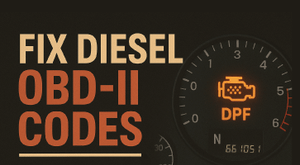Fuel Metering Basics for Oxygenated Fuels
By on Oct 29 2018
We get a lot of questions about fuel metering changes required for oxygenated fuels… and that is a good thing, because racers should be asking those questions.
Luckily, the answer is not necessarily complicated.
Let’s look at Sunoco EXO2 for instance. It’s a good fuel to use as an example because it contains 10% (by weight) oxygen. Without proper fuel enrichment, you won’t find the power you’re hoping for, and in fact the engine may not even run well.
In simple terms, you should start with adding enough extra fuel to offset the increased oxygen content. What does that mean? Well, let’s say you were running Supreme which has no oxygen. If you switch to EXO2, you will need to add approximately 10% more fuel to offset the 10% oxygen content. The extra oxygen effectively leans out the air/fuel mixture so you need to add enough fuel to get the air/fuel mixture back where it belongs. Actually a safe way to introduce EXO2 to your engine would be to go even richer than you think the engine needs… remember, engines can tolerate being rich a lot better than being lean!
OK, so you’re wondering exactly how to get 10% more fuel into your engine. This is where we, as a fuel manufacturer, have to take a step back and recommend you talk to your fuel system manufacturer. Simply put: we make fuel, not carburetors. With so many companies building carburetors these days we’d go crazy trying to keep track of whose carburetor needs which jets to get 10% more fuel. Plus we have no way of knowing how rich or lean your engine is before the switch. So have a conversation with your carb builder if you need to know how their carbs need to be re-jetted.
Below is an example of the jetting requirements one engine builder worked through as he switched one of his race engines – a carbureted small block Chevy – to EXO2. Note that no attempt was made to run the engine without first installing bigger main jets.
| Fuel | Jet # | Horsepower | Brake Specific Fuel Consumption (BSFC) |
| Supreme | 80 | 767 | 0.44 |
| EXO2 Test 1 | 86 | 781 | 0.47 |
| EXO2 Test 2 | 90 | 791 | 0.50 |
| EXO2 Test 3 | 92 | 788 | 0.51 |
So you can see from the table above that the first jet choice – the 86s – was a little lean compared to where best power was found with the 90s. Also note that power tapered off a little with the 92s. Bigger jets were needed to offset the 10% oxygen content… and after some work on the dyno, the expected power benefits were obtained.
We hope this sheds some light on proper tuning for oxygenated fuels. If we’ve now triggered a few more questions, don’t hesitate to call 1-800-RACE-GAS (1-800-722-3427)!






